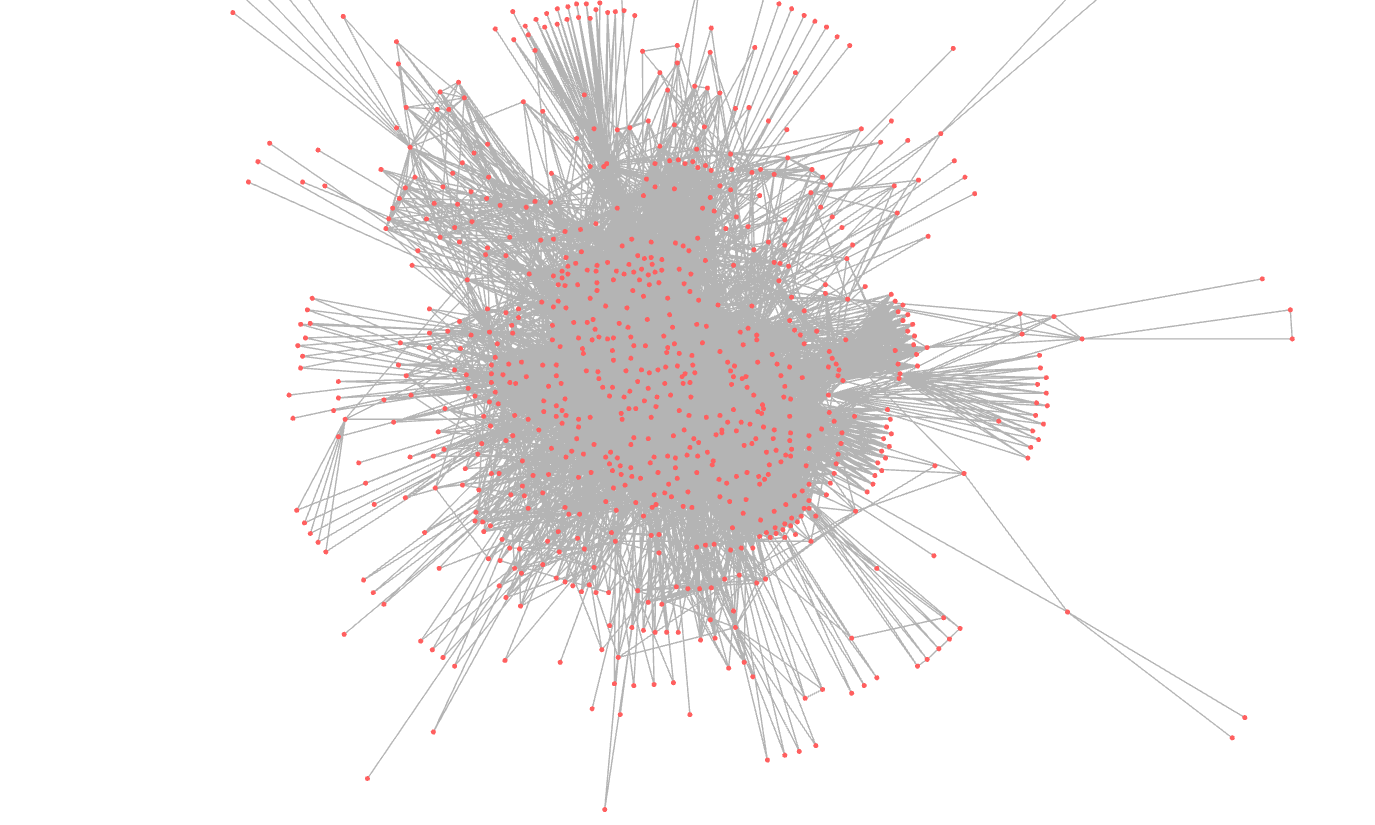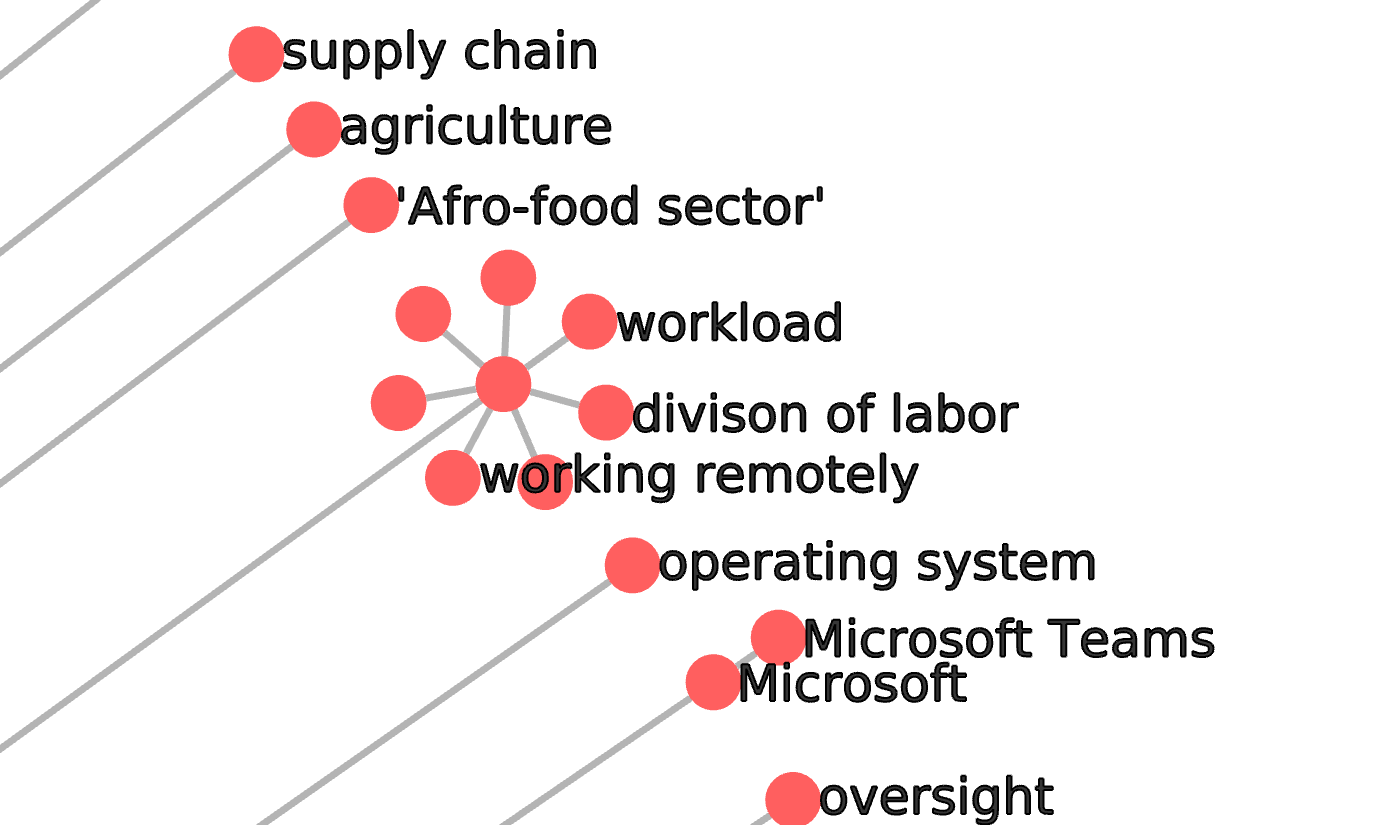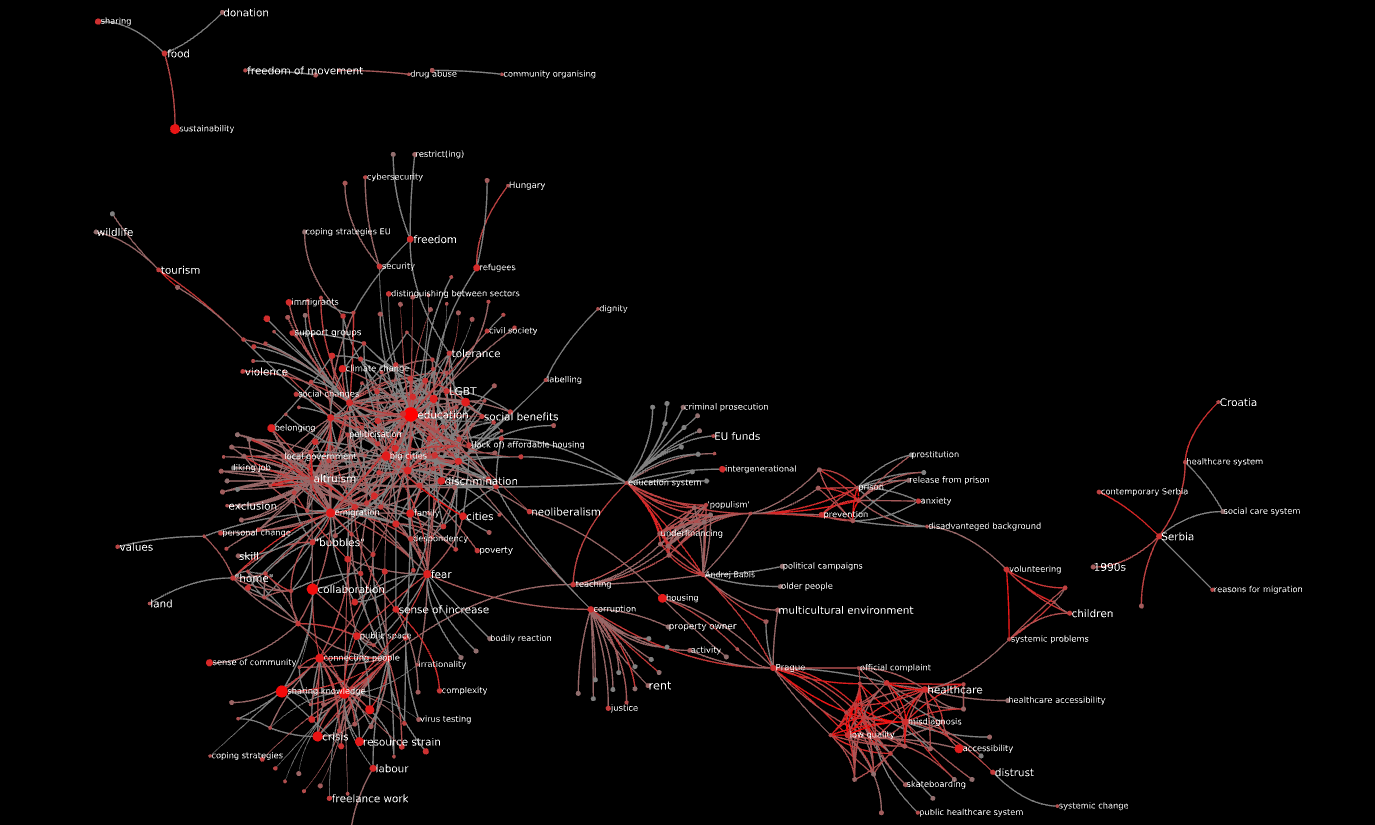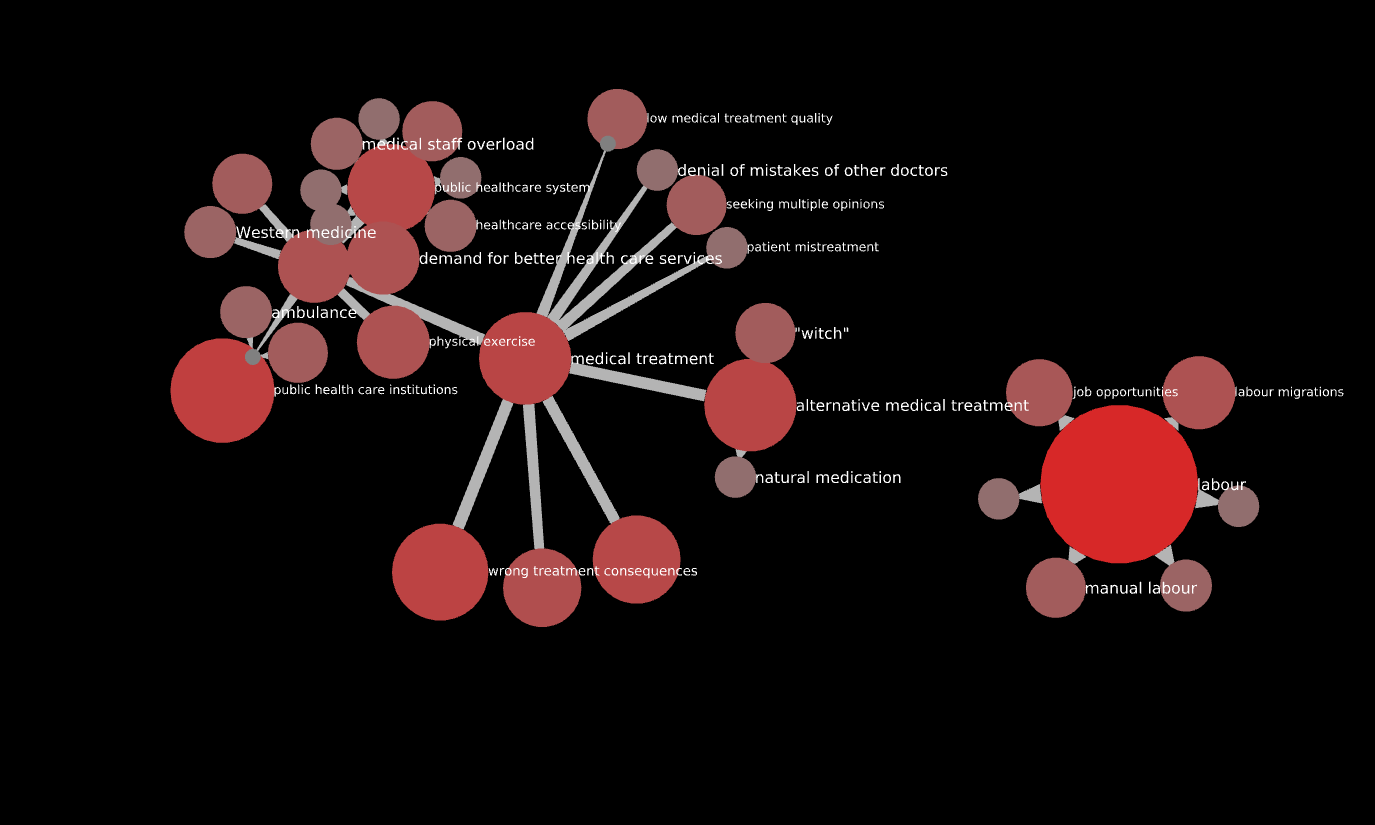Calling @amelia @Leonie @katejsim. First results.
Codes co-occurrence network:

Codes hierarchy network:

Detail:

Calling @amelia @Leonie @katejsim. First results.
Codes co-occurrence network:

Codes hierarchy network:

Detail:

I set up the repo today. It’s morphing into a small kit.
Where we are. Visualizations are k = 4.


Codes hierarchy (detail):

@amelia and team, let me know when you want to start dipping your toes in the water.
No matter. I am not doing analysis, I am writing the software to create instant co-occurrences networks from any corpus. You write the ethno-PROJECTNAME tag as the argument of a function, and launch the script that calls that function. Result: the graph of the corpus you are interested in.
Also paging @Jan @Richard @Wolha @Jirka_Kocian. My first use for this tool is some work that involves a better interoperability with @kristof_gyodi and @Michal, but, once built, we can of course use it in any project. I am in fact testing it on several corpora.
@amelia and team, I have done some more work on this. I also produced a POPREBEL-specific Tulip perspective that keeps track of the different language fora.
However, there is a fundamental issue of the order in which you do things. In this case, I first created a graph where each co-occurrence gives rise to its own edge. This is the only way to make sure each edge belongs to one, and only one, language forum: each edge is induced by a post on which the two codes co-occur, and each post belongs to one and only one forum.
Second, I created forum subgraphs, and color-coded the edges accordingly.
Third, I created stacked graphs from each forum subgraph.
This means that each stacked subgraph is a faithful reconstruction of what goes on in that subforum. On the other hand, the subgraph ignore each other: the one for Polish only knows the value of k in the Polish subforum. The only way to get a rough idea of how much the different fora “agree” is by looking at where they position themselves in the graph (I applied the layout on the root graph).
I also provide an updated documentation in the repo.
I plan to attend tomorrow’s meeting, I guess you will have questions. ![]()